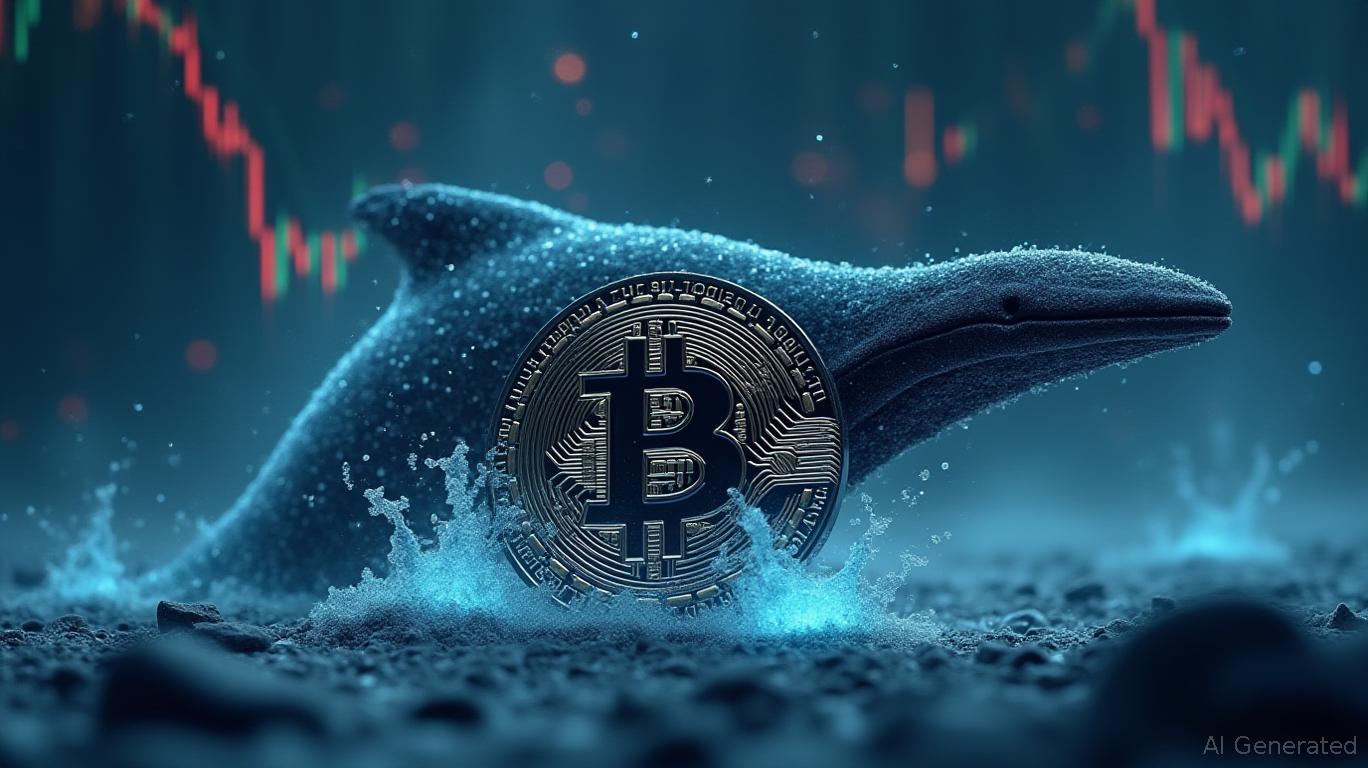Bitcoin News Today: The Changing Role of Bitcoin: Shifting from an Inflation Shield to a Gauge of the Dollar
- NYDIG analysis reveals Bitcoin's weak correlation with inflation, challenging its "digital gold" narrative as dollar fluctuations increasingly drive its price. - Technical indicators show bearish patterns and divergences, though institutional adoption and macroeconomic factors could still fuel a 2025 rebound. - Bitcoin and gold both respond to dollar strength/weakness rather than inflation, with combined market value nearing 133% of U.S. M2 money supply. - BlackRock's $100B Bitcoin ETF and retirement por
NYDIG's latest analysis suggests that Bitcoin, often promoted as a digital safeguard against inflation, may not fulfill that role as reliably as many investors believe. Instead, the cryptocurrency seems to react more strongly to changes in the U.S. dollar, a trend that could alter its attractiveness as broader economic conditions shift. These insights question a fundamental belief in the crypto community and reveal Bitcoin's increasing connection to mainstream financial markets, according to a
From a technical perspective, Bitcoin's price continues to show significant swings, with conflicting signals about its next move. Recently trading close to $113,000, Bitcoin has developed a "rising wedge" pattern on its weekly chart—a bearish indicator that could potentially drive the price below $60,000 soon, as noted in a

NYDIG's research further highlights the weak link between Bitcoin and inflation. Greg Cipolaro, the company's global research chief, pointed out that the relationship between Bitcoin and inflation metrics is "neither stable nor particularly strong," despite its reputation as "digital gold," as reported by Cointelegraph. Gold, the traditional inflation hedge, shows similarly inconsistent and sometimes opposite movements relative to inflation, according to Cipolaro. Both assets, instead, seem to be more influenced by real interest rates and the strength of the U.S. dollar. When the dollar declines, both Bitcoin and gold typically rise, though they do not move in tandem, according to a
This dollar-driven trend is becoming more significant as global monetary policies change. Jurrien Timmer from Fidelity pointed out that the combined market capitalization of gold and Bitcoin now equals about 133% of the U.S. M2 money supply, approaching record highs from 1980, as mentioned in a
Bitcoin's shifting position within the financial landscape is also altering its risk characteristics. Unlike gold, which has a long-standing reputation as a store of value, Bitcoin's price is becoming more closely linked to liquidity trends and institutional involvement. The rapid growth of BlackRock's Bitcoin ETF, now nearing $100 billion in assets, and the inclusion of crypto in retirement investment options, as reported by FXStreet, underscore this shift. However, with negative funding rates for Bitcoin perpetual contracts and rising open interest, short-term price swings remain a challenge for traders as Bitcoin straddles the line between speculative asset and economic indicator.
Disclaimer: The content of this article solely reflects the author's opinion and does not represent the platform in any capacity. This article is not intended to serve as a reference for making investment decisions.
You may also like
Zelle Adopts Stablecoins to Address Challenges in Cross-Border Payments
- Zelle plans to expand international remittances using stablecoins, leveraging its $1T domestic transaction network and 150M users. - Backed by JPMorgan, Bank of America, and Wells Fargo, the move targets speed, cost, and compliance challenges in cross-border payments. - The initiative aligns with U.S. regulatory clarity post-GENIUS Act, positioning stablecoins as a bridge between traditional finance and blockchain. - Challenges include AML/KYC compliance and competition from PayPal, crypto-native stablec

Hyperliquid News Today: DEXs Break $1 Trillion Milestone, Fueling the Rise of Virtuals
- Virtuals Protocol (VIRTUAL) surged in October 2025 amid DeFi growth and rising on-chain derivatives demand, as decentralized perpetual exchanges (DEXs) hit $1T+ monthly trading volume. - Hyperliquid led the rally with $317B traded, while rivals like Aster and Astros expanded DEX infrastructure, pushing DEXs to 26% of crypto-derivatives market share. - Despite security risks (e.g., Bunni DEX’s $8.4M exploit), DeFi resilience persists, with tokens like Pump.fun (PUMP) and Jupiter’s JUP seeing TVL gains and

Bitcoin Updates: Major Whale Makes Bold Long Position Despite Market Uncertainty After Liquidations
- Whale 0x960 opened $37M BTC/ETH long positions with 15x leverage, risking liquidation at $3,705 (BTC) and $10,500 (ETH). - BTC ETFs gained $90.6M inflows while ETH ETFs lost $93.6M, reflecting diverging investor sentiment amid $111K BTC and $3,932 ETH prices. - Recent $19B crypto liquidation event highlighted market vulnerability to whale-driven shorting, with 79% of traders expecting prolonged US government shutdown. - Divergent whale strategies show $8.09M gains vs. $5.52M losses, while BTC crossing $1

Bitcoin Updates: BTC Whale's Bold Short Position—$1 Million at Stake as Collateral, Facing Potential $4 Million Loss
- The "100% Win Rate Whale" added $1M in USDC to its BTC short, raising the liquidation price to $118,409 amid a $4.07M unrealized loss. - A separate whale (0x960) opened $37M in BTC/ETH long positions, highlighting market divergence as others bet on recovery. - Analysts note Trump's trade policies and macro factors will drive BTC's next move, with the $118,409 level critical for the whale's position.
